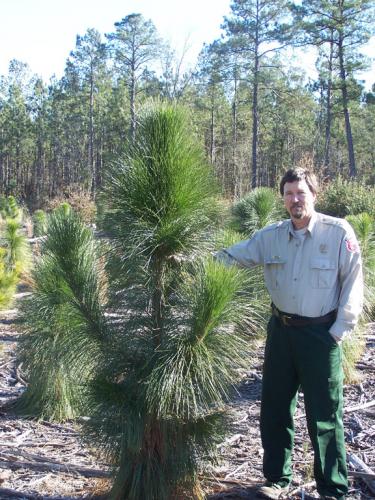Planting Trees on Your Land
Don’t forget, new trees need about 25 gallons of water a week.
When you’re ready to plant the trees you’ve chosen for your restoration site, there are some things to keep in mind.
When choosing your seedlings:
- Look for large, high-quality seedlings with sizeable roots, as these have a better shot at surviving.
- If your site is remote or hard to access or if your tree species is hard to find in seedling form, consider starting from seed.
When planting:
- Don’t plant until after the ground thaws or the danger of frost has passed in your area.
- Choose a cool (40- to 60-degree) overcast day with little or no wind in the period. This is an ideal setting for seedlings, particularly hardwood seedlings. Depending on your area, between March and May might be a good time to do your planting, however fall planting might also be an option. Talk to your local extension forester to learn more about the best planting times in your area.
- Plant each tree using the appropriate technique for planting in level ground or in a sloping site.
- Consider machine planting for large sites, as this is less labor intensive, permits precise spacing and planting depths, and may lead to higher survival rates for your seedlings.
After planting:
- Try to make sure your trees get enough water, which is about 25 gallons a week. This may not be feasible with large-scale plantings.
- Apply mulch around each tree to reduce evaporation—just not right on the trunk, which can grow moldy if mulched.
- Keep a weed-free area around each seedling that’s at least three or four feet in diameter. Weed control by mechanical methods and herbicides is crucial in the first two or three years of seedling growth.
Now that you’ve planted your trees, it’s time to step back and look at restoring your forest as a whole.
Find out More
- The Science of Planting Trees
- Tree Placement: Right Plant, Right Place
- Steps for Planting a Tree
- Care of Recently Planted Trees
- My Minnesota Woods: Planting Trees
- IN Woodlot Owners Series: Plant Trees
- Establishing and Managing Forest Trees in Western Oregon
- Wisconsin DNR: Creating a Forest
- Video on how to plant trees on slope
Previous page
Next page
How can I get more tips?
It’s simple! Enter your email below.

